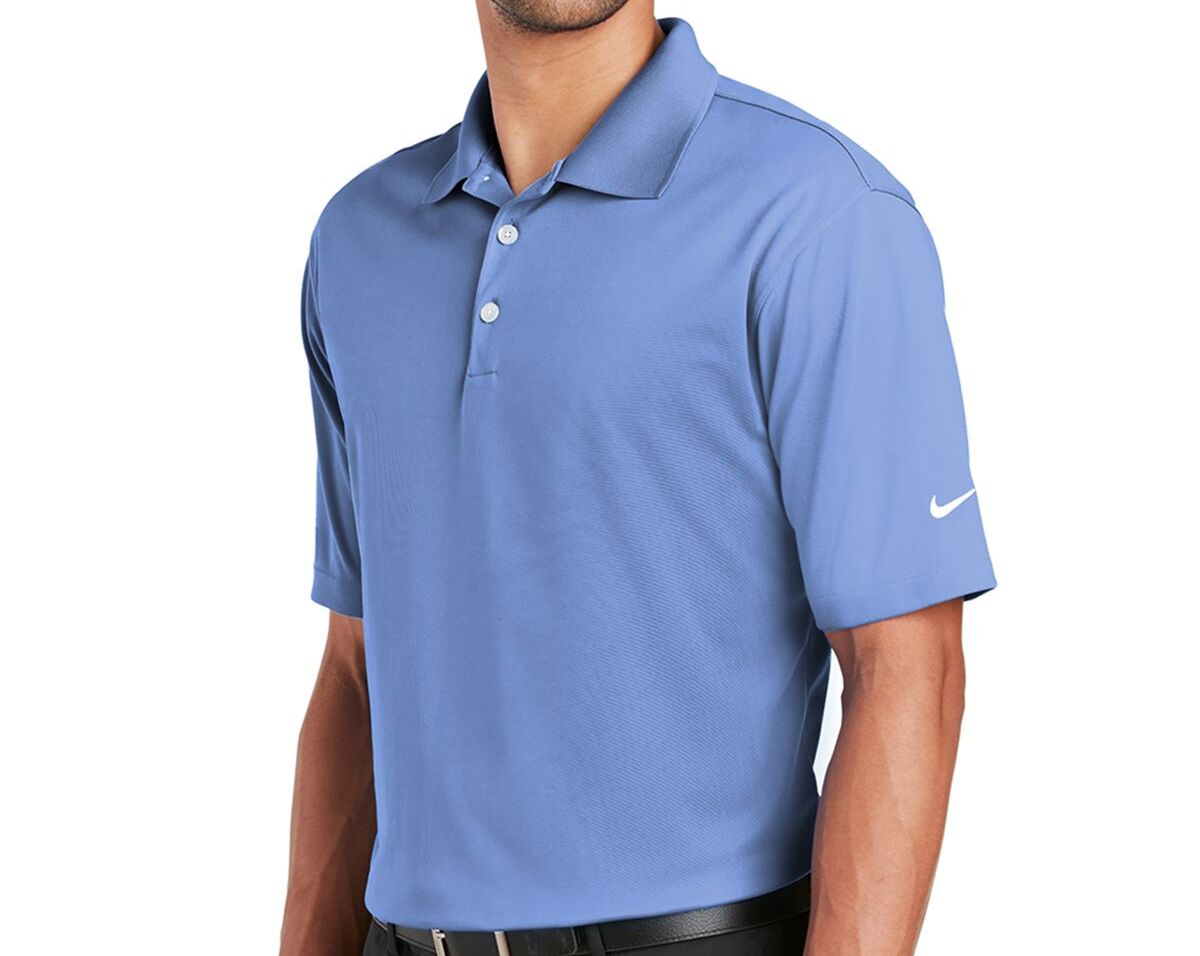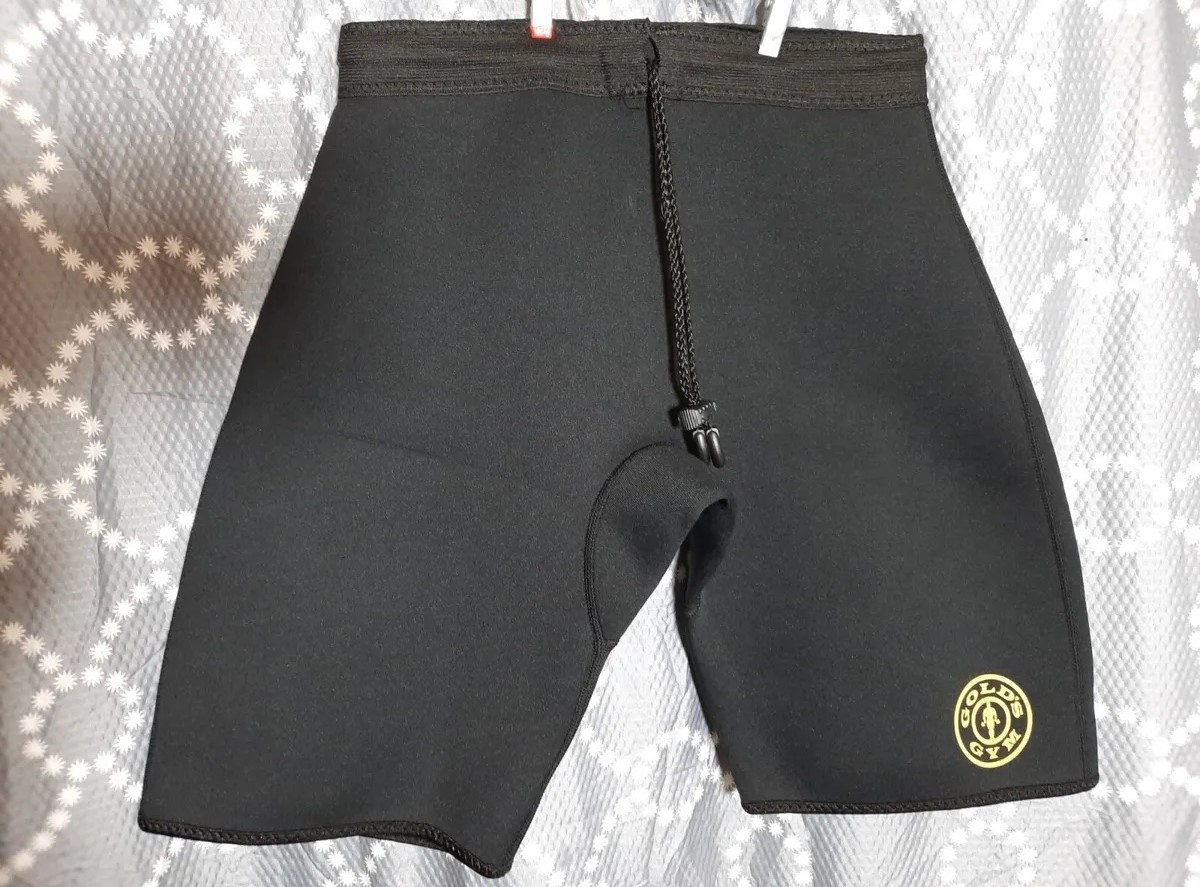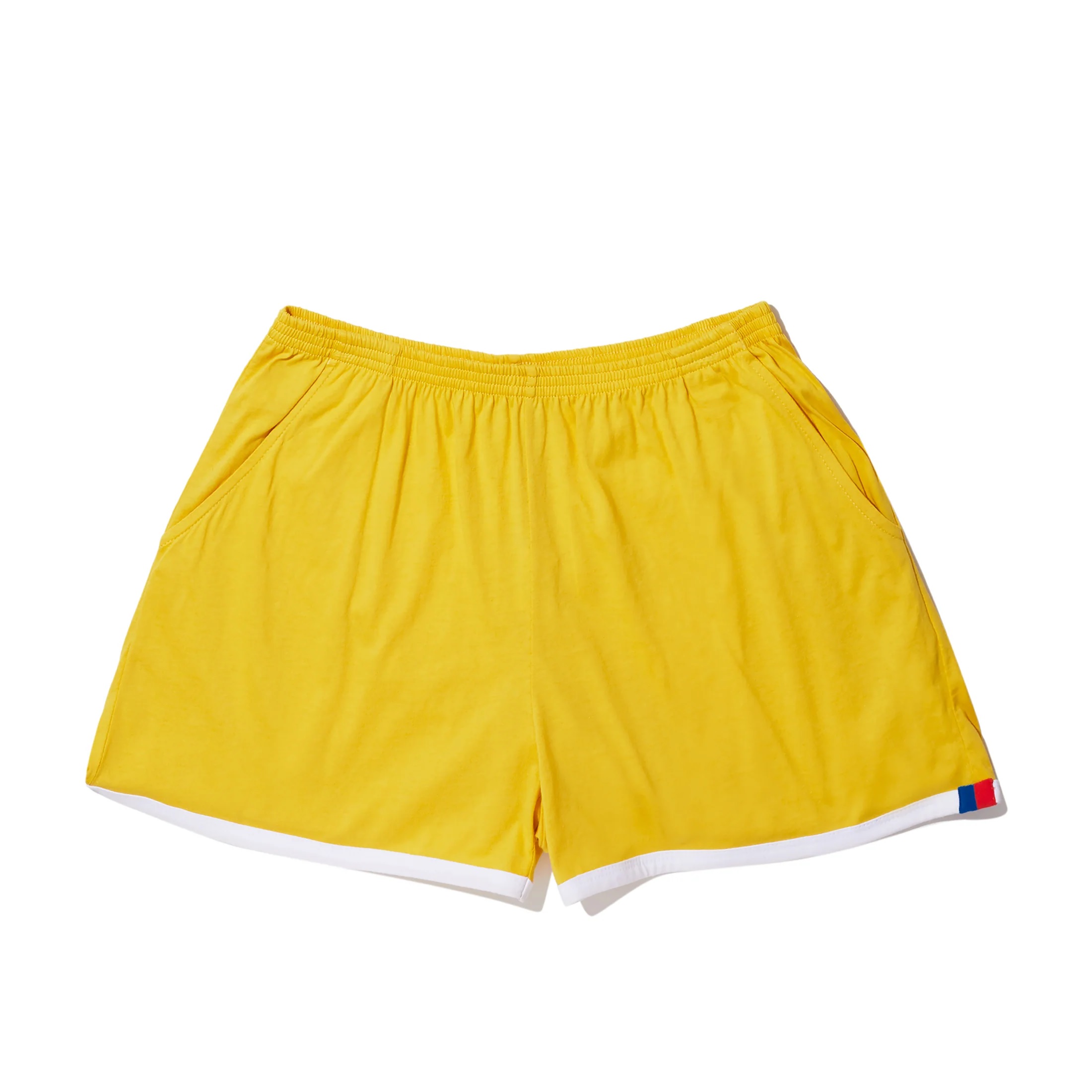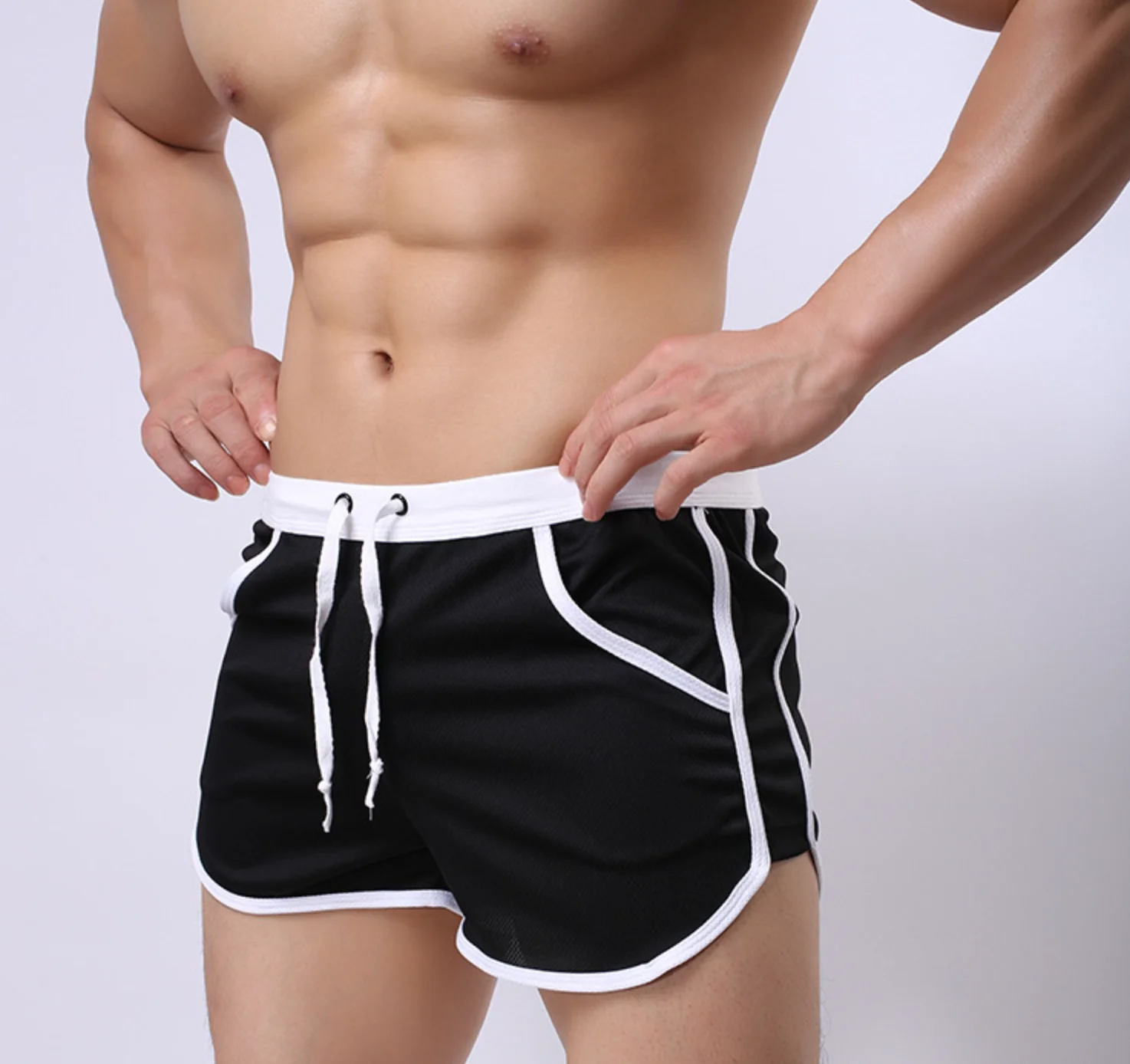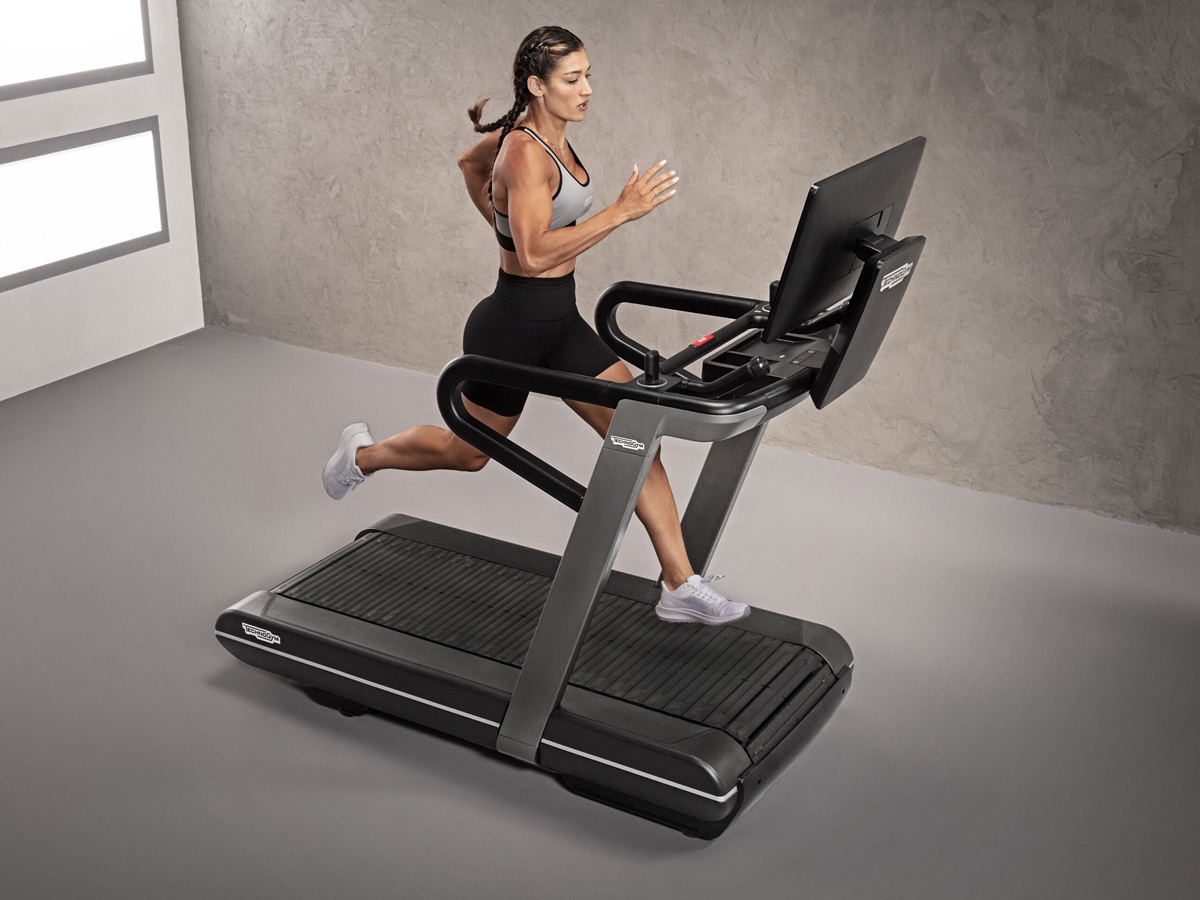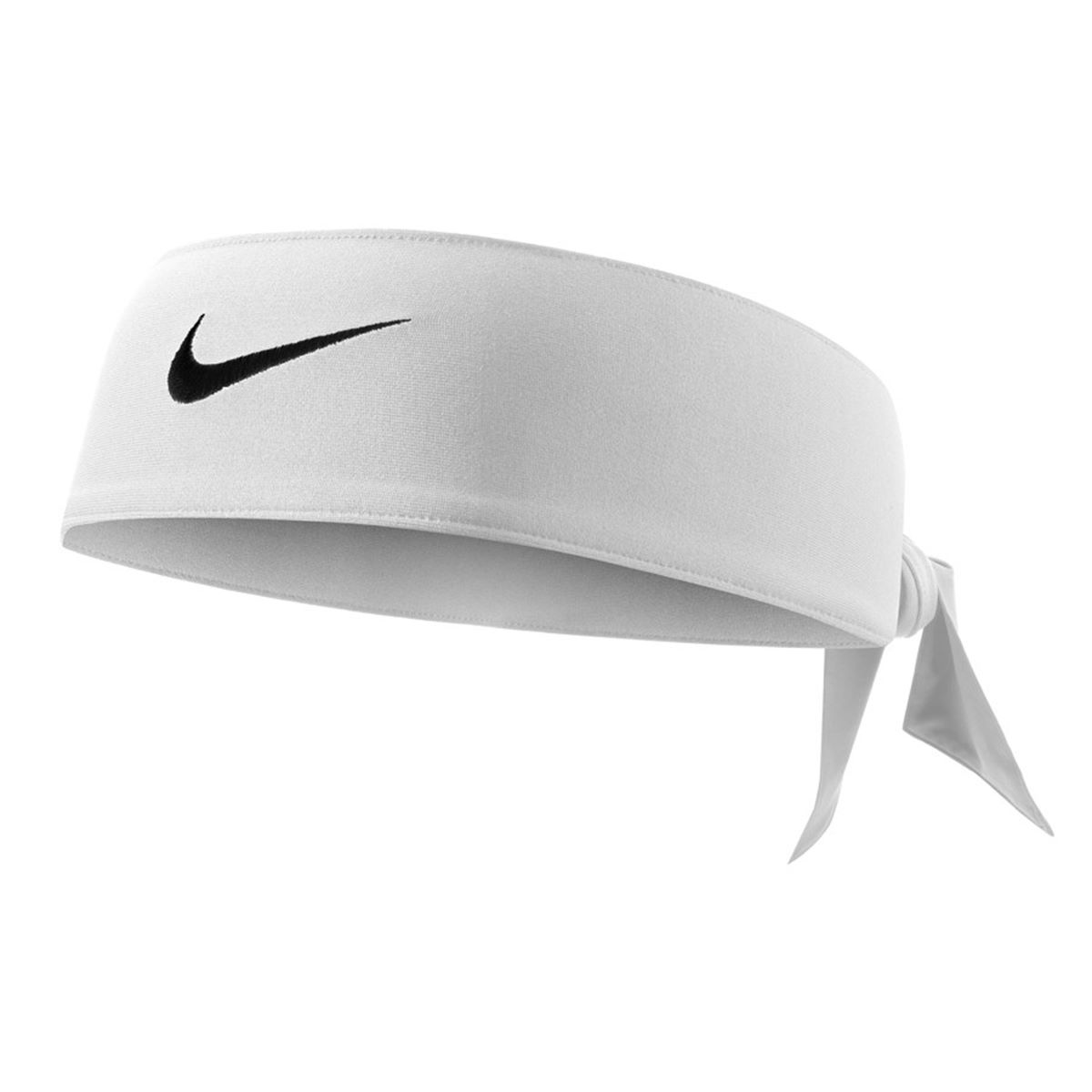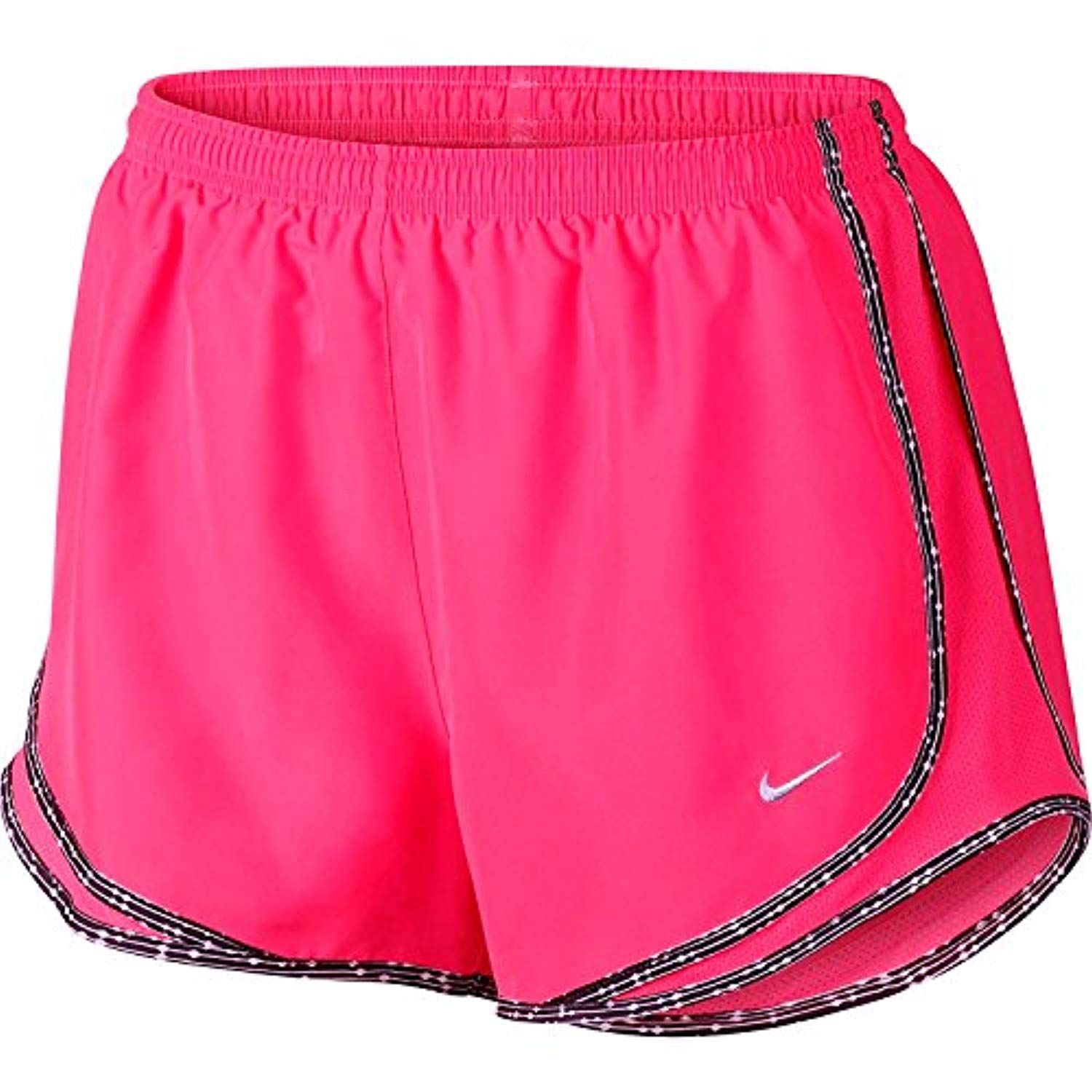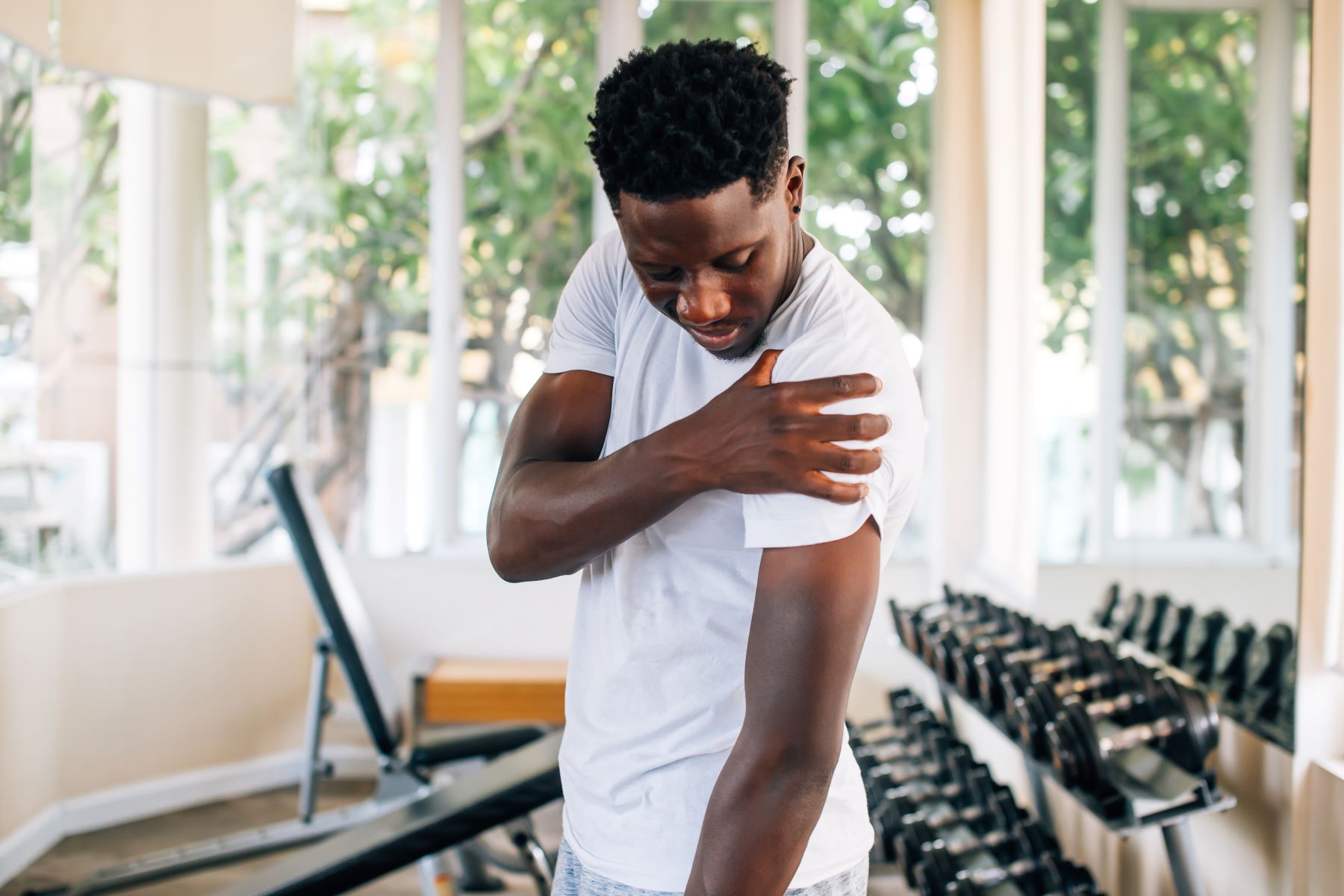

Featured
Why Do My Shoulders Pop When I Workout
Published: August 12, 2023
Find out why your shoulders pop when you workout and discover the featured exercises that can help alleviate the issue.
Introduction
Have you ever experienced a popping sensation in your shoulders while working out? It can be quite concerning and may leave you wondering why it’s happening and if it’s something to be worried about. The truth is, shoulder popping during workouts is relatively common and can have various causes.
When you engage in exercises that involve the shoulder joint, such as weightlifting, push-ups, or overhead presses, you may notice a popping or clicking sound. While it can be disconcerting, it is usually not a cause for immediate concern. Understanding why your shoulders pop during workouts can help you navigate through this issue effectively.
In this article, we will explore the causes of shoulder popping when you exercise, including muscle imbalances, overuse, and incorrect form. We will also discuss how to treat and prevent shoulder popping, with an emphasis on stretching and strengthening exercises for the shoulders. Additionally, we will highlight the importance of seeking medical advice if you experience persistent pain or significant discomfort.
So, if you’ve been wondering why your shoulders pop when you work out, keep reading to uncover the potential reasons and learn how to address this issue for a safer and more enjoyable workout experience.
Understanding Shoulder Popping
Shoulder popping, also known as crepitus, is a phenomenon characterized by a popping, cracking, or clicking sound that occurs within the shoulder joint during movement. This audible noise can be accompanied by sensations of movement or discomfort in the shoulder area.
It’s important to note that shoulder popping itself is not necessarily indicative of an underlying medical condition or injury. In fact, many individuals experience shoulder popping without any associated pain or functional limitations.
The shoulder joint is a complex structure consisting of bones, muscles, tendons, and ligaments that work together to provide a wide range of motion. During certain movements, such as overhead presses or lateral raises, the alignment of these structures may shift slightly, resulting in the popping sound.
While shoulder popping is often benign, it is essential to pay attention to any accompanying symptoms that may indicate an underlying issue. If you experience persistent pain, limited range of motion, swelling, or instability in the shoulder, it is advisable to consult a healthcare professional for a proper evaluation.
Understanding the potential causes of shoulder popping can help provide insight into why it occurs and how to address the issue effectively. In the following sections, we will explore some common factors that can contribute to shoulder popping during workouts.
Causes of Shoulder Popping during Workouts
Shoulder popping during workouts can be attributed to various factors. Let’s take a closer look at some of the common causes:
- Muscle Imbalances: Muscle imbalances occur when certain muscles are stronger or tighter than their opposing muscles. In the shoulder, this can lead to abnormal joint mechanics and contribute to shoulder popping. For example, if the muscles in the back of the shoulder are weaker than the muscles in the front, it can create an imbalance that affects the stability and movement of the joint.
- Overuse: Overuse of the shoulder joint through repetitive motions can put excessive stress on the surrounding structures, leading to inflammation and popping. This is particularly common in individuals who engage in activities that require repetitive shoulder movements, such as throwing sports or weightlifting.
- Incorrect Form: Improper form during exercises can place unnecessary strain on the shoulder joint and lead to popping. This can occur when performing exercises with excessive weight, improper technique, or poor posture. It’s crucial to maintain proper form and technique to reduce the risk of injury and minimize shoulder popping.
- Structural Abnormalities: Certain anatomical variations or structural abnormalities of the shoulder joint can contribute to popping. This can include issues like a loose labrum, bursitis, or joint hypermobility. Structural abnormalities may require medical intervention to address the underlying cause of the popping.
It’s important to note that these causes are not mutually exclusive and can often be interconnected. For example, muscle imbalances can lead to incorrect form, which in turn can contribute to overuse and shoulder popping. Understanding the specific causes that contribute to your shoulder popping can help guide you in implementing the appropriate treatment and prevention strategies.
Muscle Imbalances and Shoulder Popping
Muscle imbalances in the shoulder can play a significant role in the occurrence of shoulder popping during workouts. These imbalances can disrupt the normal function and stability of the joint, leading to popping or clicking sensations.
When certain muscles in the shoulder are stronger or tighter than their opposing muscles, it causes an imbalance in the muscle groups surrounding the joint. For instance, if the muscles in the front of the shoulder, such as the pectoralis major and anterior deltoid, are stronger or tighter than the muscles in the back, such as the posterior deltoid and rhomboids, it can lead to a forward pull on the joint. This imbalance can cause the joint to shift slightly during movements, resulting in a popping sound.
Additionally, muscle imbalances can also affect the alignment and movement of the shoulder blade (scapula). The scapula plays a crucial role in maintaining proper shoulder mechanics, and any imbalance in the muscles that control its movement can contribute to shoulder popping.
Addressing muscle imbalances is essential in preventing and managing shoulder popping. Incorporating targeted exercises that focus on strengthening the weak or inhibited muscles and stretching the tight or overactive muscles can help restore balance around the shoulder joint.
Some exercises that can help correct muscle imbalances and reduce shoulder popping include:
- Rows: This exercise strengthens the muscles in the back of the shoulder and helps counterbalance the strength of the chest muscles.
- External Rotation Exercises: These exercises target the rotator cuff muscles, which play a crucial role in shoulder stability. Examples include external rotation with resistance bands or dumbbells.
- Scapular Retraction Exercises: These exercises aim to strengthen the muscles that retract and stabilize the shoulder blade. Examples include scapular retractions or wall slides.
Incorporating these exercises into your regular workout routine can help rebalance the muscles around the shoulder and reduce the likelihood of shoulder popping during exercises. It’s important to perform these exercises with proper form and technique to maximize their effectiveness and minimize the risk of injury.
Overuse and Shoulder Popping
Overuse can be a contributing factor to shoulder popping during workouts. When you engage in repetitive movements or place excessive stress on the shoulder joint, it can lead to inflammation, irritation, and ultimately, popping sensations.
Activities that involve repetitive shoulder motions, such as throwing sports, weightlifting, or swimming, can put strain on the muscles, tendons, and ligaments surrounding the shoulder joint. This can lead to overuse injuries, such as tendinitis or bursitis, which may cause popping sounds or sensations.
Overuse injuries can occur when the tissues in the shoulder do not have sufficient time to heal between workouts or when the intensity or duration of the exercises exceeds the body’s capacity. In some cases, improper technique or form can also contribute to overuse injuries and subsequent shoulder popping.
To address overuse and reduce shoulder popping, it is crucial to incorporate rest and recovery into your workout routine. Giving the shoulder joint adequate time to rest and heal between workouts can help prevent overuse injuries. It’s important to listen to your body and avoid pushing through pain or discomfort during exercises.
Additionally, proper technique and form should be prioritized to minimize stress on the shoulder joint. Working with a qualified fitness professional or coach can help ensure that you are using correct form and technique for your exercises.
Furthermore, incorporating cross-training and varying your workouts can also prevent overuse injuries. By diversifying your activities and engaging in different types of exercises that target various muscle groups, you can reduce the repetitive strain on the shoulder joint.
If you are experiencing persistent pain or significant discomfort along with shoulder popping, it is crucial to seek medical attention. A healthcare professional can properly assess your condition, provide an accurate diagnosis, and recommend appropriate treatment options to alleviate the symptoms and prevent further injury.
Incorrect Form and Shoulder Popping
Incorrect form during exercises can significantly contribute to shoulder popping. When you perform exercises with improper technique or alignment, it can place unnecessary stress on the shoulder joint and its surrounding structures, leading to popping sensations.
Proper form is essential to minimize the risk of injury and optimize the effectiveness of your workouts. It ensures that the muscles and joints are working in the intended way, reducing the likelihood of overuse or strain on the shoulder.
There are several common form errors that can lead to shoulder popping:
- Shoulder Protraction: This occurs when the shoulders hunch forward, causing the shoulder blades to move away from the spine. It can lead to imbalances and instability in the shoulder joint, increasing the likelihood of popping.
- Shoulder Shrugging: When you elevate your shoulders towards your ears during exercises, it can add unnecessary tension to the muscles and structures surrounding the shoulder joint. This can result in popping or discomfort.
- Overarching of the Lower Back: If you have an excessive arch in your lower back during exercises, it can alter the position of the shoulders and put strain on the shoulder joint, leading to popping sensations.
- Excessive Weight: Lifting weights that are too heavy for your current strength level can compromise your form and strain the shoulder joint. It’s essential to gradually increase the weight and ensure that you can maintain proper form throughout the movement.
To prevent shoulder popping due to incorrect form, it is important to focus on maintaining proper alignment and technique during exercises. Engaging the core, keeping the shoulders down and back, and avoiding excessive ranges of motion can all help reduce the stress on the shoulder joint.
Working with a qualified fitness professional or trainer can be beneficial, as they can provide guidance and corrections to ensure proper form. They can also tailor exercises to your specific needs and help you gradually progress without compromising form or risking injury.
If you are unsure about the correct form for a particular exercise, it’s best to seek guidance or instruction before attempting it. Taking the time to learn and execute exercises with proper form is essential for a safe and effective workout routine.
Treating and Preventing Shoulder Popping
While shoulder popping during workouts is often harmless, it can still be bothersome and cause concern. Here are some strategies for treating and preventing shoulder popping:
1. Rest and Recovery: If you experience shoulder popping along with discomfort or pain, it’s essential to allow your shoulder joint time to rest and recover. Modify or temporarily avoid activities that aggravate the popping sensation, and give your shoulder adequate time to heal.
2. Strengthening and Stretching Exercises: Incorporating targeted exercises to strengthen the muscles around the shoulder joint and improve flexibility can help reduce popping. Focus on exercises that target the rotator cuff, scapular stabilizers, and postural muscles to improve shoulder mechanics and stability.
3. Correcting Muscle Imbalances: Addressing any muscle imbalances in the shoulder is crucial in reducing shoulder popping. Work with a physical therapist or qualified fitness professional to develop a tailored exercise program that addresses the specific imbalances present in your shoulder.
4. Improving Posture: Poor posture can contribute to shoulder popping. Focus on maintaining proper alignment through exercises and daily habits. Keep your shoulders back and down, and avoid slouching to reduce unnecessary stress on the shoulder joint.
5. Gradual Progression: When it comes to weightlifting or any other exercise routine, it is crucial to progress gradually. Avoid sudden increases in weight or intensity, as this can strain the shoulder joint and increase the risk of popping. Gradually increase the challenge over time while maintaining proper form and technique.
6. Warm-Up and Cool-Down: Prioritize a proper warm-up and cool-down routine before and after your workouts. This helps prepare the muscles and joints for exercise and aids in reducing stiffness and tension post-workout.
7. Seek Medical Advice: If you experience persistent pain, significant discomfort, or a decrease in range of motion, it is important to seek medical advice. A healthcare professional can assess your condition, provide a diagnosis, and recommend appropriate treatment options, such as physical therapy or medication if necessary.
Remember, everyone’s body is unique, and what works for one person may not work for another. It’s important to listen to your body, be mindful of any discomfort or pain, and make adjustments as needed to ensure a safe and enjoyable workout experience.
Stretching and Strengthening Exercises for Shoulders
Incorporating stretching and strengthening exercises specifically targeting the shoulders can help alleviate shoulder popping and improve overall shoulder joint health. Here are some effective exercises to consider:
1. Shoulder External Rotation: Use a resistance band or light dumbbell and bend your elbow at a 90-degree angle. Keeping your elbow tucked to your side, rotate your forearm away from your body. This exercise targets the rotator cuff muscles and helps improve stability in the shoulder joint.
2. Shoulder Flexor Stretch: Stand tall and clasp your hands behind your back. Gently lift your hands upward until you feel a stretch across the front of your shoulders and chest. Hold for 20-30 seconds and repeat for a few sets. This stretch helps release tension in the front of the shoulders.
3. Scapular Retraction: Sit or stand with your spine straight. Squeeze your shoulder blades together, imagining that you are trying to hold a pencil between them. Hold for a few seconds, release, and repeat for several repetitions. This exercise strengthens the muscles that retract and stabilize the shoulder blades.
4. Shoulder Internal Rotation: Attach a resistance band to a secure anchor point and hold the band with your arm bent at a 90-degree angle. Rotate your forearm inwards toward your body, keeping your elbow close to your side. This exercise targets the muscles responsible for internal rotation of the shoulder.
5. Doorway Pec Stretch: Stand in a doorway with your arms outstretched and bent at a 90-degree angle against the door frame. Slowly lean forward onto your front leg, feeling a stretch across your chest and the front of your shoulders. Hold for 20-30 seconds and repeat for a few sets.
6. YTWL’s: Lie face down on a mat and lift your arms off the ground to form the shape of the letters Y, T, W, and L sequentially. Focus on squeezing your shoulder blades together and maintaining good posture throughout the exercise. This exercise targets the muscles of the upper back and shoulders.
7. Prone Shoulder Extension: Lie face down on a mat with your arms straight at your sides. Lift your chest and shoulders off the ground while simultaneously squeezing your shoulder blades together. Hold for a few seconds and slowly release. This exercise strengthens the muscles of the upper back and shoulders.
Remember to perform these exercises with proper form and technique. Start with lighter weights or resistance bands and gradually increase the challenge as you progress. It’s essential to listen to your body, not push through pain, and seek guidance from a qualified fitness professional if needed.
Incorporating a combination of stretching and strengthening exercises into your regular workout routine can help address muscle imbalances, improve shoulder stability, and reduce the occurrence of shoulder popping during workouts.
Shoulder Popping, Injury, and Seeking Medical Advice
While shoulder popping during workouts is often harmless, it’s important to be aware of the signs that may indicate an underlying injury or condition. Persistent pain, limited range of motion, swelling, or instability in the shoulder should not be ignored, as they may suggest an injury that requires medical attention.
If you experience severe pain or discomfort during or after your workouts, it’s crucial to seek medical advice. A healthcare professional, such as a sports medicine specialist or orthopedic doctor, can properly evaluate your condition and provide an accurate diagnosis.
Depending on the severity and nature of the injury, the medical professional may recommend various treatment options, including rest, physical therapy, medication, or, in more severe cases, surgery. It’s important to follow their guidance and adhere to the prescribed treatment plan to promote healing and prevent further complications.
Seeking medical advice is especially crucial if shoulder popping is accompanied by any of the following symptoms:
- Intense or sharp pain
- Traumatic injury or sudden dislocation
- Failure to improve with conservative treatment
- Severe swelling or bruising
A skilled healthcare professional will be able to provide the appropriate diagnosis and steer you towards the best course of action. They may conduct imaging tests, such as X-rays or MRI scans, to get a clearer picture of the shoulder joint and identify any structural abnormalities or injuries.
In some cases, shoulder popping may require the expertise of a physical therapist. A physical therapist can design a specialized rehabilitation program to address the specific issues contributing to your shoulder popping. They can provide hands-on treatments, exercises, and techniques to aid in recovery, improve shoulder mechanics, and prevent future injuries.
While it is essential to seek medical advice when necessary, remember that proactive prevention is the key to avoiding future shoulder injuries. This includes practicing proper posture, maintaining good form during exercises, incorporating a balanced strength and flexibility training program, and listening to your body’s signals to prevent overuse injuries.
If you experience any concerns or issues related to shoulder popping during workouts, consulting with a healthcare professional can help ensure your shoulder health and overall well-being.
Conclusion
Shoulder popping during workouts can be a common occurrence, often without any cause for immediate concern. Understanding the various factors that contribute to shoulder popping, such as muscle imbalances, overuse, and incorrect form, can help you address the issue effectively.
Incorporating stretching and strengthening exercises specific to the shoulders can help alleviate shoulder popping and improve overall shoulder joint health. Targeting the rotator cuff, scapular stabilizers, and postural muscles can help rebalance the muscles around the shoulder joint and reduce popping sensations.
It’s crucial to practice proper form and technique during exercises to minimize stress on the shoulder joint and reduce the risk of injury. Gradual progression, rest, and recovery are also essential to prevent overuse injuries and manage shoulder popping.
If you experience persistent pain, significant discomfort, or other concerning symptoms, it’s important to seek medical advice. A healthcare professional can provide an accurate diagnosis, recommend appropriate treatment options, and help guide you towards a safe and effective recovery.
Remember, everyone’s body is unique, and what works for one person may not work for another. It’s essential to listen to your body, be mindful of any discomfort or pain, and make adjustments as needed to ensure a safe and enjoyable workout experience.
By taking steps to address shoulder popping and prioritize shoulder health, you can continue to pursue your fitness goals with confidence and reduce the likelihood of any long-term issues or complications. Stay proactive, seek guidance when needed, and enjoy your workouts while caring for your shoulders along the way.
